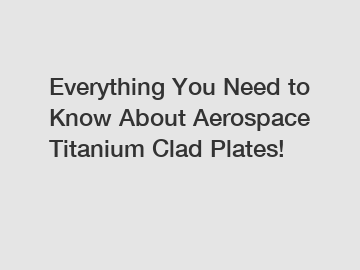Gallium and its surprises
The Element Gallium
Introduction to Gallium
Gallium is well known as a metal that has a melting point just above room temperature, which means it can literally melt in your hand. In elemental form, it is relatively non-toxic which means it can be handled without alarm, unlike mercury.
But gallium metal has many amazing secrets. It can form incredible alloys with other metals. It can destroy metals like aluminum, or give them abilities that were previously hidden from the world – as you will see below.
Ten surprising facts about gallium
- Gallium expands when it freezes, one of the few substances to do so.
- A small amount of gallium will destroy anything made out of aluminum, including aluminum cans. It also attacks steel, making it very brittle.
- Although it can melt in your hand, it won’t boil unless you heat it to 4,000F – the largest range of any element.
- It forms an alloy with Indium and Tin that is a liquid well below room temperature.
- There is a book based on gallium, called The Disappearing Spoon. You can watch how to make a disappearing spoon here.
- Dmitri Mendeleev, the creator of the periodic table, is well-known for predicting the existence and the properties of the element gallium, a few years before it was discovered.
- People sometimes wear gloves when handling gallium metal – not because it is toxic, but to avoid having to wash off the “gallium stains”. It also stains glass.
- Like aluminum, most gallium compounds are fairly colorless.
- Like mercury, a blob of liquid gallium in water can simulate a “beating heart” when oscillating between oxidation and reduction in the presence of both an oxidizing and reducing agent.
- Gallium is used in special high-temperature thermometers because of its high boiling point and low melting point.
Amazing, and not so amazing Gallium properties
Melting Point
We know that the element gallium has a low melting point, 29.76 Celsius to be precise. If you hold it in your hand and try to melt it, it will melt eventually, but it takes a while and leaves your hand with a sticky residue. Trying to melt gallium in your hand is not very impressive – but it is not dangerous to hold.
Gallium and the Periodic Table
Gallium has the atomic symbol Ga, and atomic number 31. It lies to the right of zinc, and the left of germanium. Gallium is in group 13 of the periodic table, the boron group, and lies below aluminum and above indium. It has physical and chemical properties similar to both aluminum and indium, especially indium.
Gallium’s electron configuration is 1s22s22p63s23p63d104s24p1 . The gallium atom has 3 valence electrons, which is why the gallium +3 ion is the most common. It has an electronegativity of 1.81.
Gallium-Aluminum Alloy
What is impressive, is when gallium forms an alloy with aluminum metal or foil. If you add aluminum foil to liquid gallium (you can easily melt it in hot water), the aluminum appears to dissolve in the gallium. This alloy can rapidly react with water, producing copious amounts of hydrogen gas. The liquid nature of this alloy inhibits the development of a coherent and adherent aluminum oxide layer that normally prevents aluminum from reacting with water. Gallium actually diffuses into the metal lattice of aluminum.
The reaction is quite impressive to see, but it is not so reactive that you have to worry about exotic compounds flying in your face. The resulting grey soup of water, gallium, and aluminum hydroxide is not particularly attractive though – for a beautiful reaction you can check out how to produce a lead iodide precipitate.
For a more explosive reaction with water, check out extracting potassium from a banana.
Our video on the amazing reaction of gallium, aluminum foil and water. Please subscribe to our Youtube channel, lots more amazing chemistry & element videos coming!How does gallium destroy aluminum?
Many people wonder, why does gallium destroy aluminum? Gallium has several effects on aluminum and other metals. First of all, it forms an amalgam, basically an alloy, with aluminum. Gallium pervades the aluminum oxide passivation layer that forms on aluminum metal, and interferes with aluminum’s crystal lattice, making it brittle. This is referred to as gallium-induced structural failure. Mercury has the same effect on aluminum, but since mercury is toxic, this experiment is generally not performed.
Because of this, carrying gallium on aircraft is heavily restricted.
Last, but not least, as mentioned earlier – the resulting gallium aluminum alloy no longer has the defense of the aluminum oxide passivation layer – the formation of this passivation layer is inhibited. It reacts instantly with water to produce hydrogen gas, displaying the “true” reactivity of aluminum.
Is gallium a metal?
Yes, gallium is 100% a metal. It is never classified as a non-metal, nor a metalloid. And it is not a transition metal. – it is called a post-transition metal.
The best way to view its metallic properties is when it is in a liquid state, but without any oxidized crud on it.
Is gallium toxic?
Gallium metal is considered safe to play with and handle, and is considered non-toxic in its elemental form. Gallium compounds are mildly toxic, they are not considered dangerous but should not be inhaled or ingested. We don’t recommend eating elemental gallium, but if small quantities were accidently ingested, it most likely would not be harmful.
Gallium Applications in Today’s World
The most common use of gallium is in electronics, as gallium arsenide, GaAs, and in blue LED’s as gallium nitride, GaN. Gallium arsenide is commonly used in semiconductors, as it has properties that are superior to silicon, especially for defense and aerospace applications. However, it is significantly more expensive that silicon. Gallium arsenide often starts out as a boule, a single-crystal ingot grown from molten gallium & arsenic.
SWIR cameras are short-wave infrared cameras (SWIR), which feature InGaAs sensors. SWIR cameras create thermal images, and can image through glass. The market for these cameras, used for inspecting a wide-range of products such as solar cells or produce, and night vision, is rapidly growing.
Groups have also looked into using gallium aluminum alloys as a source of hydrogen as a sustainable, renewable energy – but making this economically feasible has proved difficult.
Modern Day Research with the element Gallium
Researchers at the, led by Dr. Rodney Ruoff at the Center for Multidimensional Carbon Materials in Ulsan, South Korea are doing exciting research. They are combining gallium with non-metallic materials such as diamond, graphite, graphene, silicon carbide, and commercial silicone putty. Incorporating these “fillers” into gallium allows it to form pastes or putties. The more of the filler you mix in, the more putty-like the material becomes.
These pastes and putties have several beneficial properties including enhanced thermal conductivity (with diamond), which could have use as a thermal interface paste, and shielding from electromagnetic interference. They were also able to combine these fillers with gallium-indium alloys, which are liquid at room temperature.
Interview with Dr. Benjamin Cumming on potential applications of their research on putty-like composites of gallium metal.
History of Gallium
Mendeleev predicted gallium and many of its properties in 1871. It was discovered in 1875 by French chemist Paul Emile Lecoq de Boisbaudran, using spectroscopy on a zinc ore.
Rumor has it, that an old “parlor” trick was to craft a spoon out of gallium, and let an unsuspecting guest use it in their hot tea, at which time the spoon would melt. Putting this “trick” together took considerable time and resources, so we are not sure how often it actually occurred.
Gallium Chemistry
Gallium is a metal in the 3A group of elements, along with boron, aluminum, indium and thallium. This element is not a transition metal, and it is not a semimetal. It’s chemistry is similar to the chemistry of aluminum. Gallium reacts very slowly with hydrochloric acid, slowly with sulfuric acid, and more quickly with nitric acid to produce gallium (III) nitrate. Water and gallium do not react with each other.
Gallium compounds & oxidation numbers
In compounds, it is usually in the +3 oxidation state, but it can also exhibit the +1 oxidation state. Gallium (I) compounds are strong reducing agents.
Further reading:Aluminum casting vs. steel casting: a comparison of properties
Double Wire Mesh Fence vs Chain Link Fence: Which One Reigns Supreme?
What Are the Different Types of Fiberglass Yarn?
How to Stop Your Gabions from Bulging?
Kitchen Countertops: Their Importance and When to Upgrade - Best Countertop Store Near Austin Texas
7 Questions to Ask Your Client as They Choose Kitchen Countertops
Where is most metal exported from?
The element readily reacts with most strong acids to produce gallium (III) compounds. Gallium (IIII) chloride, nitrate and sulfate are all common gallium (III) compounds. Gallium chloride is very corrosive.
The element iodine reacts with gallium to produce gallium iodide, a yellow compound that exists as the dimer Ga2I6. It can be reduced with elemental gallium to form GaI. GaI is a reactive green powder than contains gallium in the zero, +1 and +3 oxidation states.
Gallium will dissolve in a hot, concentrated base like sodium hydroxide to form the gallate ion, Ga(OH)4–, a polyatomic ion.
Gallium – Properties
Symbol – Ga
Melting point – 29.7 °C
Boiling point – 2400 °C
Density at -20°C – 5.91 g/cm3
Atomic weight – 69.723
Atomic number – 31
Electronegativity – 1.81
Classification: Metal, Boron group, Group 13
Natural abundance of .00169% in the earth’s crust
Electron shell configuration – [Ar] 3d10 4s2 4p1
Isotopes – the element gallium has 31 isotopes, gallium-69 and gallium-71 occur naturally
Found naturally in the rare mineral Gallite (CuGaS2), also in zinc and aluminum ores
Toxicity: Elemental gallium is considered non-toxic. LD50 of gallium chloride is 4,700 mg/kg, in the range of sodium chloride
Where can I buy the element gallium?
Gallium sales are not restricted, you can buy small amounts on ebay, amazon, or on specialty websites. Try this search.
For further element articles, check out our Interactive Periodic Table!
A general chemistry Libretexts Textmap organized around the textbook
Chemistry: The Central Science
by Brown, LeMay, Bursten, Murphy, and Woodward
The line that divides metals from nonmetals in the periodic table crosses the p block diagonally. As a result, the differences between metallic and nonmetallic properties are evident within each group, even though all members of each group have the same valence electron configuration. The p block is the only portion of the periodic table where we encounter the inert-pair effect. Moreover, as with the s-block elements, the chemistry of the lightest member of each group in the p block differs sharply from that of its heavier congeners but is similar to that of the element immediately below and to the right of it in the next group. Thus diagonal similarities in chemistry are seen across the p block.
A nonmetal is a chemical element that mostly lacks metallic attributes. Physically, nonmetals tend to be highly volatile (easily vaporized), have low elasticity, and are good insulators of heat and electricity; chemically, they tend to have high ionization energy and electronegativity values, and gain or share electrons when they react with other elements or compounds. Seventeen elements are generally classified as nonmetals; most are gases (hydrogen, helium, nitrogen, oxygen, fluorine, neon, chlorine, argon, krypton, xenon and radon); one is a liquid (bromine); and a few are solids (carbon, phosphorus, sulfur, selenium, and iodine).
As you study the periodic trends in properties and the reactivity of the elements in groups 13–18, you will learn how “cobalt blue” glass, rubies, and sapphires are made and why the US military became interested in using boron hydrides as rocket fuels but then abandoned its effort. You will also discover the source of diamonds on Earth, why silicon-based life-forms are likely to exist only in science fiction, and why most compounds with N–N bonds are potentially explosive. You will also learn why phosphorus can cause a painful and lethal condition known as “phossy jaw” and why selenium is used in photocopiers.
Gallium and its surprises
22: Chemistry of the Nonmetals
Further reading:What is the Advantage and Disadvantage of Stainless Steel Tube
Bypassing the "middle guy" for copper sales.
Nickel prices soar and plunge in 2022 volatility
How to Shop for Dinnerware
What is the Difference?
Welding Test Coupon Procedures
Stainless Steel Balls







